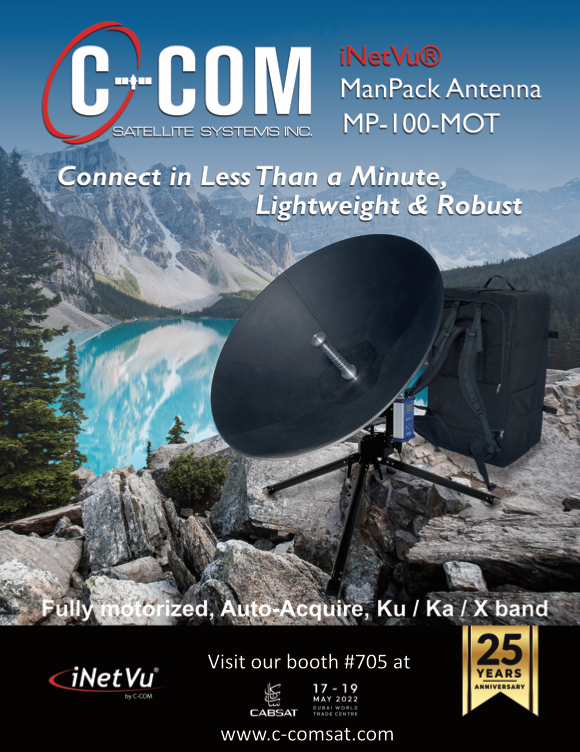They say that “necessity is the mother of invention” — and when it comes to high-speed connectivity, there’s an undeniable growing need for people to stay connected wherever they are located.
With this vision in mind, SES worked with Thales Alenia Space (TAS) to manufacture the GEO telecommunications satellite, SES-17 (artistic rendition above), that can interoperate seamlessly with the company’s next generation, non-geosynchronous (NGSO) satellite system, O3b mPOWER. Together, they formed a multi-orbit network that is adaptable to varying bandwidth and latency requirements.
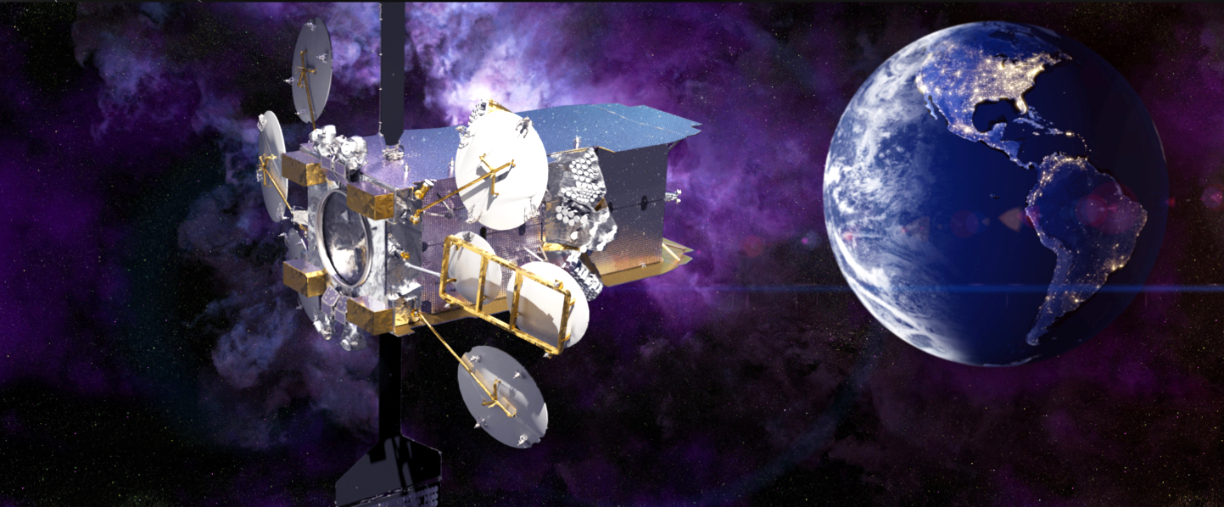
Paul Van Gelder, the Vice President of Technology Programs Management, discussed what makes SES-17 the single most capable satellite SES has ever brought to market. We hear a lot about the new capabilities of SES-17.
Mr. Van Gelder, would you talk about what makes this the satellite so special?

Paul Van Gelder
I believe that one of the most important characteristics of SES-17 is how highly flexible the satellite is, both on the ground and in space. The SES-17 payload uses the 5th generation of Thales’s digital transparent processor (DTP) that enables unique features such as unlimited switching/ routing and frequency conversions.
The processing capacity of the DTP enables us to deliver as much as ten times more throughput than traditional satellites. The DTP plus flexible amplifiers allow us to change path, bandwidth and power to meet a customer’s changing requirements and real-time traffic demands.
On the ground, we can switch traffic between different gateways, thanks to Adaptive Resource Control (ARC), a proprietary, ground-based, dynamic management platform. ARC allows us to detect and respond to issues, such as rain fade, which is important to ensure the system’s availability and meet our service level agreements (SLAs) for customers .
It seems that ARC is an integral part of SES-17, what makes it so important and how does it work?
Paul Van Gelder
In a nutshell, ARC manages dynamic changes in real-time and orchestrates the ground and space resources, from the satellite payload to the gateways and user terminals. The ARC software required years of innovation, needing to balance the intelligence and responsiveness to react to countless situations in space or on the ground, but also the flexibility to work with all of SES’s next-gen satellites in GEO and MEO and ground hardware infrastructure.
In fact, ARC also drives the unprecedented flexibility of our next-gen, Medium Earth Orbit (MEO) satellites, O3b mPOWER. With both satellite systems using ARC and Ka-band, SES-17 is a critical milestone of the company’s unique, multi-orbit strategy; ground terminals built for O3b mPOWER can simultaneously operate with SES-17. This allows solutions such as multi-orbit backups and SD-WAN traffic optimization.
Ultimately, what it means for customers is that SES can allocate large amounts of flexible capacity over a very large service area — covering most of the Americas and North Atlantic Ocean — while providing reliable, orchestrated services with a multi-orbit constellation.
What other innovations have been a part of the SES-17 design?
Paul Van Gelder
With so much going on inside, SES-17 generates quite a bit of heat. Therefore, the satellite incorporates a new thermal control system that was 20 years in the making. Much like a high-end gaming computer, the Two-Phase Mechanically Pumped Loop (MPL) developed by TAS and ESA, circulates a fluid refrigerant to remove heat, ensuring long-lasting, reliable operations.
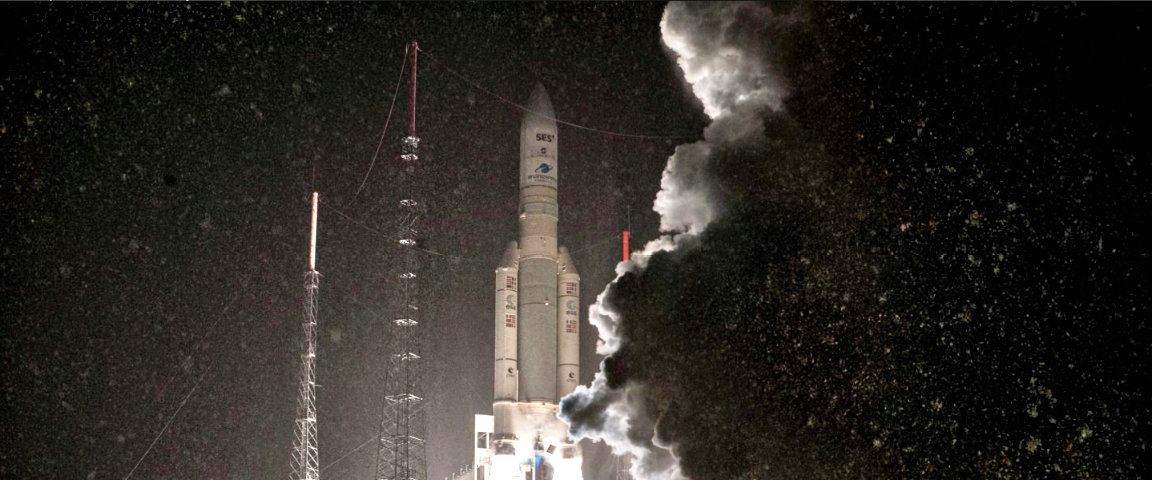
The Arianespace Ariane 5 launch of the SES-17 satellite.
Carefully integrating the full ecosystem helps maximize service performance by automatically managing load balance, prioritizing traffic, and switching between MEO and GEO. That process requires a lot of integration among platforms, business support systems, operations support systems, the new all-digital architecture, digital orchestration, ARC, and the other innovations — all in order to reliably meet robust SLAs.
Would you explain more about SES-17, such as the satellite’s launch date and other elements of this on-orbit spacecraft?
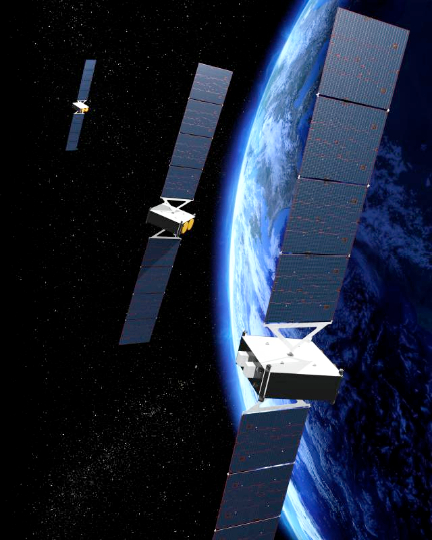
Artistic rendition of SES O3b mPOWER satellites
on-orbit. Image is courtesy of SES.
Paul Van Gelder
The SES-17 satellite was successfully launched into space onboard an Ariane 5 launcher operated by Arianespace from the Europe’s Spaceport in Kourou, French Guiana, at 11:10 p.m. local time (02:10 am UTC), on October 23,2021. From its orbital slot of 67.1 degrees West orbital slot, SES-17 incorporates cutting-edge technologies and delivers the best connectivity experience for SES customers operating in the aeronautical, maritime, enterprise, and government markets across the Americas, the Caribbean as well as the Atlantic Ocean.
Built by Thales Alenia Space, SES-17 marked an important milestone in satellite technology. This is the first Ka-band, geostationary satellite to embark a fully digital payload that is most powerful DTP ever placed on-orbit and, combined with the ability to dynamically change the power and frequency allocation of any beam, the SES-17adapts to changing customer needs in real-time.

Equipped with an all-electric propulsion system, anchor customer Thales’ InFlyt Experience will use SES-17’s connectivity to power their next-gen aviation connectivity solution, FlytLIVE ensures that the crew and passengers have always-on, high-speed, Wi-Fi connection at peak times and in high-traffic routes, all the while optimizing bandwidth.
Thank you for your insights, Mr. Van Gelder.
Milestone Met
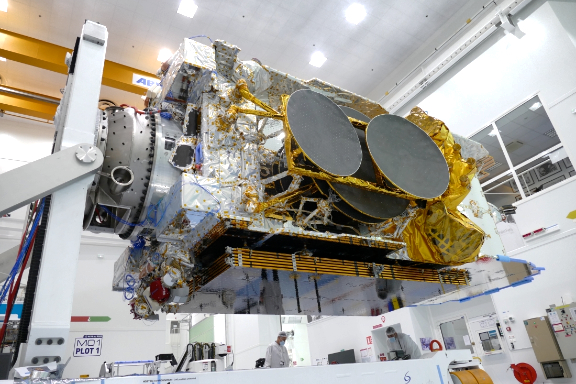
The SES-17 satellite build completed at Thales Alenia Space facilities.
Photo is courtesy of Thales Alenia Space.
“The launch of SES-17 was an exciting milestone for the company’s FlytLIVE Connectivity Solution that is currently flying within the United States,” said Craig Olson, Vice President at Thales InFlyt Experience. “The network and satellite architecture was specifically developed for the unique connectivity requirements of our commercial aviation customers and their passengers. With SES-17, FlytLIVE will provide full coverage for the entire Americas and North Atlantic Corridor delivering an unmatched connectivity experience in the air.”
“We were immensely excited to have SES-17 join our GEO fleet and MEO constellation. SES-17 is the fruit of a successful collaboration between the Thales Group, Thales Alenia Space and SES and enables us to address the exponential connectivity demands in aviation and maritime as well as to accelerate digital inclusion initiatives across the Americas,” said Steve Collar, CEO of SES. “Thanks to Arianespace, SES customers can leverage the high throughput, global reach and low-latency of SES’s multi-orbit, interoperable Ka-band satellite network that comprises SES-17 and our upcoming O3b mPOWER constellation.”
“What a launch —– SES-17 mobilized all of the Thales Alenia Space experts — from the innovative design of the satellite itself to the combined operations. Fully-digital and highly-innovative, SES-17 benefits from all the state-of-art technologies we have developed to fulfill the market’s connectivity needs,” said Herve Derrey CEO of Thales Alenia Space.
www.ses.com


